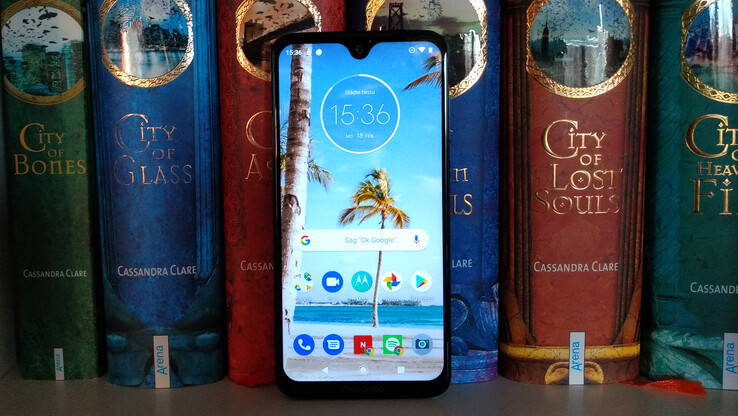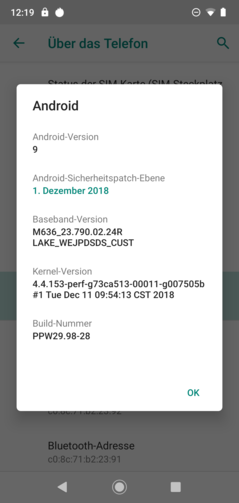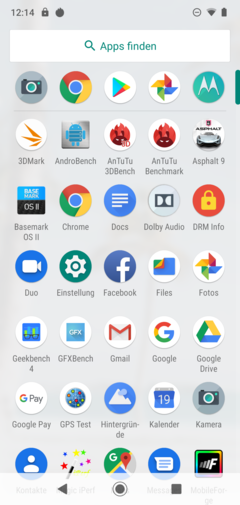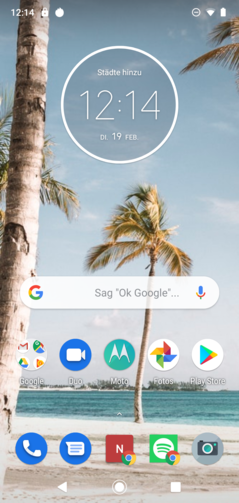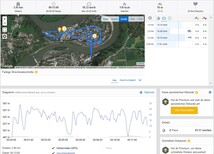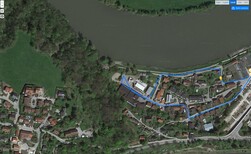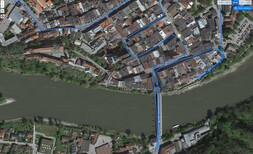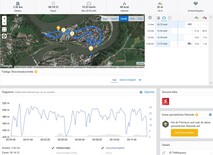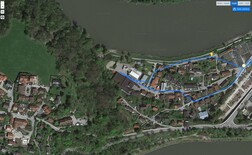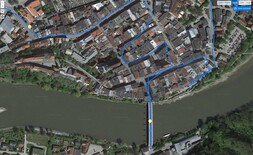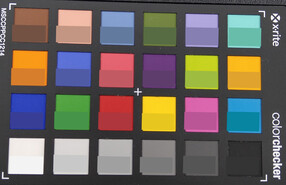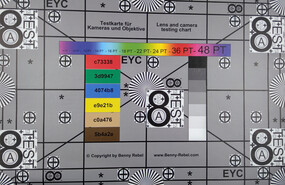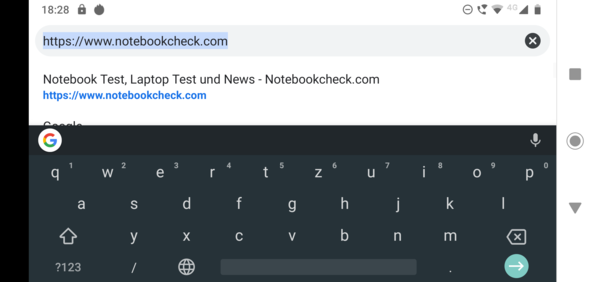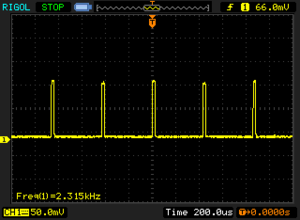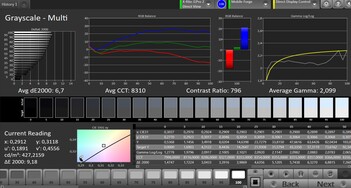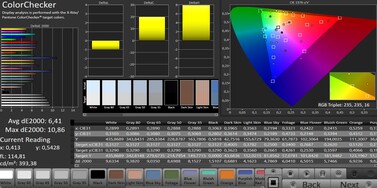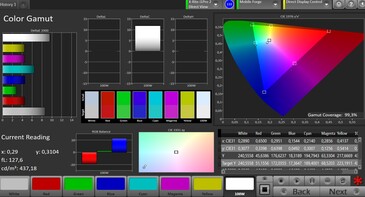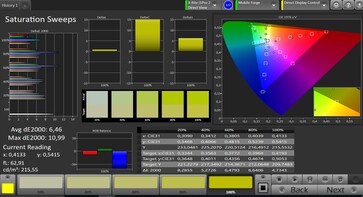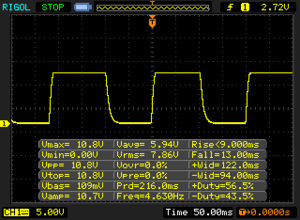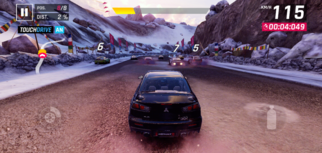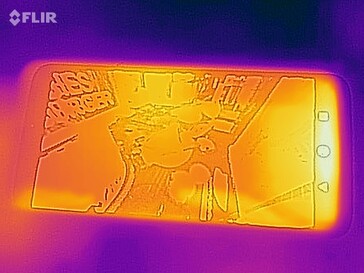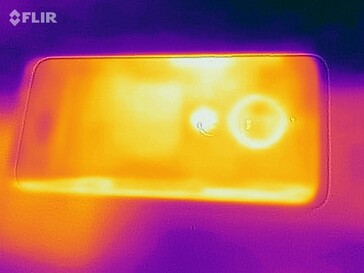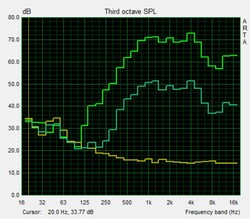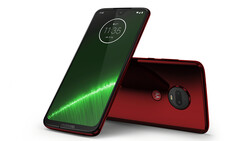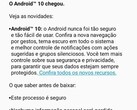Motorola Moto G7 Plus Smartphone Review
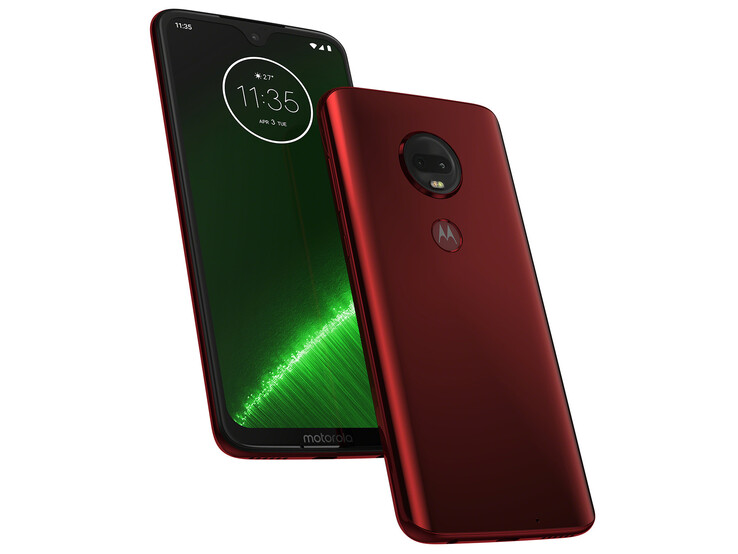
While other manufacturers often only promise a people's smartphone, Motorola continues to bring this to market with its G series devices. The company is now on the 7th generation of its G series, and it still manages to keep costs down while delivering most features that many people are after, despite being taken over by Lenovo. Motorola has announced four G7 models that are all well-equipped, stylish and affordable yet specialise in different areas.
The focus for this review is the Moto G7 Plus that puts the main camera in the spotlight and which Motorola claims to have redefined camera standards for midrange smartphones. The 16 MP main camera has optical image stabilisation (OIS) and intelligent photo functions too, which could impress if it is well implemented.
We have chosen to compare the G7 Plus against comparably priced midrange smartphones. Our comparison devices include the Honor 8X, the HTC U12 Life, Moto G7 and the Samsung Galaxy A7 (2018).
Case
The days when midrange smartphones were frumpy, heavy and ugly are long gone. The new G7 series is currently the best example of this. The Moto G7 and Moto G7 Plus have a modern design with thin display bezels and a svelte waterdrop notch. Motorola has equipped both devices with stylish glass backs too that make them look more expensive at first glance than their €250 (~$283) to €300 (~$339) retail price.
The G7 Plus has an anodised plastic frame rather than a more premium, and perhaps more structurally sound, metal frame, but this does not detract from the build quality of our review unit. We instantly noticed that Motorola had used plastic instead of metal, but the former should absorb shocks better than metal and reduce the likelihood of the display cracking when dropped.
Our review unit looks especially stylish thanks to its slightly curved glass back that tapers into its frame and which makes the G7 Plus easy to hold. The device weighs 176 g (~6.2 oz), which is heavier than all our comparison devices. The G7 Plus is thicker than all but the HTC U12 Life of our comparison devices too, but the former has a comparatively small footprint. Overall, the G7 Plus is slightly smaller than its predecessor with a higher screen to body ratio and even a less pronounced camera hump, which has typified recent Moto G series devices.
The one give away of the G7 Plus’ price is its display, which sits flat against its frame. Many new flagships, such as the Huawei Mate 20 Pro and the Samsung Galaxy S9 have curved displays, but it is easier to accidentally touch the display in our opinion. The inclusion of a flat display makes the G7 Plus more readable than its curved screen counterparts though as it does not catch as many reflections.
Our review unit is well made, and gaps between materials are even. The physical buttons also sit perfectly within the frame and have optimal pressure points along with a clear keystroke. The G7 Plus is sturdy too and does not bend regardless of how hard we try to flex it. Our review unit does emit a soft clicking sound when we apply light pressure to the display. Our Moto G7 review unit does not do this though, so we expect that this is an isolated issue with our G7 Plus test device.
Connectivity
Larger display yes, more memory no. Like last year, the Moto G model has 64 GB of internal storage and 4 GB of RAM, but the stagnation is not necessarily a bad thing. This combination remains the standard for midrange smartphones, and the G7 Plus supports up to 512 GB microSD cards, which is a higher capacity than its predecessors officially supported. You can also save apps and data to external storage, but the option for doing so is hidden within Developer options.
Motorola also continues to equip its devices with two SIM card slots and a dedicated microSD card slot. By contrast, most smartphones that promise dual-SIM functionality and microSD card expansion have a hybrid second SIM card slot that forces you to choose between using a second SIM or a microSD card.
It is worth noting that the G7 Plus is also powered by a Qualcomm Snapdragon 636 SoC, while Motorola uses the weaker Qualcomm Snapdragon 632 SoC with the rest of the G7 family. The CPU performance is top notch from both SoCs, but the GPU performance leaves a lot to be desired, about which we will discuss more in our Performance section.
Software
The Moto G7 Plus ships with Android 9 Pie, which is the latest version of Android at the time of writing. Motorola also promises to deliver regular security patches and at least one system update to Android Q. Unfortunately, our review unit arrived with December 2018 security patches, which were a few months outdated at the time of our tests.
Motorola has made no changes to the OS from stock Android, so even Android newcomers should quickly acclimatise to using and navigating through the OS. The company continues to include Moto Actions, which integrates additional functions that are not present in stock Android. Moving the G7 Plus down swiftly twice in a chopping motion enables the flashlight while twisting your wrist quickly twice turns on the default camera app. The G7 Plus also has an always-on display (AOD) feature that allows you to preview the battery percentage, date, time, and notifications or missed calls. The AOD can be customised within the overhauled Moto app.
The G7 Plus also has DRM Widevine L1 certification that enables HD streaming of services such as Amazon and Netflix. By contrast, many of its competitors are limited to SD streaming.
Communication & GPS
Another advantage that the G7 Plus has over the G7 is its faster LTE and Wi-Fi connectivity. The G7 Plus supports up to IEEE 802.11 ac Wi-Fi and can connect to 5 GHz networks, while the G7 is limited to 802.11 n Wi-Fi and 2.4 GHz networks. The G7 Plus also supports LTE Cat.13 for up to 390 Mbit/s download and 150 Mbit/s upload speeds. Again, the G7 only supports the slower LTE Cat. 4. The G7 Plus also supports a decent range of LTE bands, which should allow it to connect to most LTE networks worldwide.
Our review unit also achieved decent Wi-Fi speeds with our reference Linksys EA8500 router and performed well in our iperf3 Client comparison tables. The G7 Plus finished top of our “receive” comparison test and third behind its predecessor and the Galaxy A7 (2018) in our transmission test. Hence, the G7 Plus has above average Wi-Fi performance for its price.
| Networking | |
| iperf3 transmit AX12 | |
| Samsung Galaxy A7 2018 | |
| Motorola Moto G6 Plus | |
| Motorola Moto G7 Plus | |
| HTC U12 Life | |
| Honor 8X | |
| iperf3 receive AX12 | |
| Motorola Moto G7 Plus | |
| HTC U12 Life | |
| Motorola Moto G6 Plus | |
| Samsung Galaxy A7 2018 | |
| Honor 8X | |
The G7 Plus also has an accurate GPS module that can find a satellite fix with up to 10 metres (~33 ft) accuracy when we tested our review unit indoors. GPS accuracy rose to 5 metres (~16 ft) when we tested the G7 Plus next to a window and 3 metres (~10 ft) outside.
We also took the G7 Plus on a bike ride to compare its location accuracy against the Garmin Edge 520. Our review unit occasionally took small shortcuts to keep up us, but it is largely as accurate as the Garmin. In short, the G7 Plus should be accurate enough for general navigation tasks.
Telephone Features & Call Quality
Motorola pre-installs the Google suite of telephony apps and has now added a dark mode, which can prove useful when using the G7 Plus at night. The app functions just as well as it does on other devices that we have tested.
The G7 Plus has good call quality too. The microphones captured our voice well, but more clarity would have been nice. Our call partner remained intelligible throughout our tests too, and the earpiece can get loud without distorting. The hands-free functionality is almost better than making a call using the earpiece. Our review unit picks out our voice well, even if we stand far away from it, but we would advise against making calls using the loudspeaker in crowded places as the speakers get particularly loud.
There is also VoLTE support, but this will only work on carriers that have provisioned the Moto G7 Plus on their network.
Cameras
The G7 Plus has a 16 MP main camera compared to the 12 MP camera that the G6 Plus has. Additionally, Motorola has included a secondary sensor that provides depth of data, which can help the G7 Plus to create bokeh effect photos. The 16 MP camera has an f/1.7 aperture just like its 12 MP predecessor, but it is also optical stabilised and is one of the first midrange smartphones that we have tested with OIS. The two rear-facing cameras combine to create astonishingly sharp images even in poorer lighting conditions, which are generally better than even those that more expensive smartphones can manage.
Overall, photos look clear with low image noise, but colours sometimes look too dull for our liking. The G7 Plus avoids aggressive postprocessing that we have seen with many other smartphones, so photos look comparatively natural. The Auto HDR+ also provides a decent dynamic range.
The G7 Plus has a 12 MP front-facing camera that also supports HDR, but it overexposes bright areas to the point where they look blown out. Nevertheless, selfies look sharp and detailed. Both cameras can shoot video at 4K too, which is rare for a midrange smartphone and is another feather in its cap.
Motorola also boasts of the G7 Plus’ high-resolution zoom, but do not set your expectations too high here. The main camera supports up to 8 x digital zoom, which look passable, but they are miles away from an optically zoomed shot. Photos taken at moderate zoom look decent though. There is also a Smart Composition feature that automatically adjusts slightly skewed shots. The function did not work well during our tests, which may explain why Motorola hides it deep within the default camera settings.
We liked the videos in 4K at 30 FPS and 1080p at 30 FPS though. The G7 Plus also can record in 1080p at 60 FPS, but the image quality is noticeably worse than shooting at 30 FPS for some reason. The camera can also record slow-motion videos at between 120 FPS and 960 FPS, which can create cool looking time lapse videos. The videos are software stabilised too, which is impressive.
Our review unit performed comparatively poorly under laboratory conditions though. Colours look rather dull compared to ColorChecker reference colours, but not terribly so. Our test chart is strongly distorted at the edges of the photo too, but there is no sharp drop in sharpness, which is common for many smartphones. Overall, the Moto G7 Plus has outstanding cameras for the money that will produce excellent shots in daily use.
Accessories & Warranty
The G7 Plus comes with a 27-W fast charger, which Motorola claims will provide the G7 Plus with eight hours battery from just 15 minutes charge. We shall put this claim to the test in our Battery Life section.
The device also comes with a silicone case, a USB cable and a SIM tool.
The G7 Plus comes with 24 months manufacturer’s warranty. Please see our Guarantees, Return policies and Warranties FAQ for country-specific information.
Input Devices & Operation
The G7 Plus has a 10-point multitouch touchscreen that precisely reproduced our inputs throughout our tests. Oddly, the display feels hollow when tapped, which sounds disconcerting. Moreover, we heard some quiet clicking sounds when we were typing, but this may just be an isolated issue with our review unit. Motorola pre-installs Google GBoard as the default keyboard app, but you can replace this with another keyboard should you prefer.
The hardware buttons functioned perfectly throughout our tests and have a pleasant feel to them. This also applies to the fingerprint sensor, which unlocked our review unit more slowly than many flagship smartphones but worked just as reliably.
Display
The G7 Plus has a 6.24-inch display that operates natively at 2,270x1,080, which results in a pixel density of 403 PPI. The expansive display is interrupted by a small waterdrop notch, which contains the front-facing camera and various sensors. Motorola markets the display as being Max Vision, but it is only slightly larger than that of its predecessor.
Our review unit achieved an average maximum brightness of 525 cd/m², which is considerably darker than its predecessor, but it is still bright, nonetheless. The screen has a comparatively high black value too, but it is on par with our comparison devices, as is the 926:1 contrast ratio.
The G7 Plus has acceptable colour accuracy too, but its DeltaE deviations are higher than we would have liked. Overall, the G7 Plus has a great display for its price, but Motorola appears to have equipped it with a lower quality screen that it used in the G6 Plus.
| |||||||||||||||||||||||||
Brightness Distribution: 85 %
Center on Battery: 537 cd/m²
Contrast: 926:1 (Black: 0.58 cd/m²)
ΔE ColorChecker Calman: 6.41 | ∀{0.5-29.43 Ø4.79}
ΔE Greyscale Calman: 6.7 | ∀{0.09-98 Ø5}
99.3% sRGB (Calman 2D)
Gamma: 2.099
CCT: 8310 K
| Motorola Moto G7 Plus IPS, 2270x1080, 6.2" | HTC U12 Life IPS, 2160x1080, 6" | Samsung Galaxy A7 2018 Super AMOLED, 2220x1080, 6" | Honor 8X LCD IPS, 2340x1080, 6.5" | Motorola Moto G6 Plus IPS, 2160x1080, 5.9" | |
|---|---|---|---|---|---|
| Screen | -5% | 42% | -5% | 34% | |
| Brightness middle (cd/m²) | 537 | 468 -13% | 570 6% | 484 -10% | 761 42% |
| Brightness (cd/m²) | 525 | 452 -14% | 565 8% | 469 -11% | 723 38% |
| Brightness Distribution (%) | 85 | 90 6% | 93 9% | 93 9% | 90 6% |
| Black Level * (cd/m²) | 0.58 | 0.62 -7% | 0.55 5% | 0.69 -19% | |
| Contrast (:1) | 926 | 755 -18% | 880 -5% | 1103 19% | |
| Colorchecker dE 2000 * | 6.41 | 6.09 5% | 1.5 77% | 7.3 -14% | 2.4 63% |
| Colorchecker dE 2000 max. * | 10.86 | 10.23 6% | 3.6 67% | 11.1 -2% | 5.2 52% |
| Greyscale dE 2000 * | 6.7 | 6.8 -1% | 1.2 82% | 7.4 -10% | 1.8 73% |
| Gamma | 2.099 105% | 2.708 81% | 2.07 106% | 2.16 102% | 2.21 100% |
| CCT | 8310 78% | 6972 93% | 6504 100% | 8534 76% | 6312 103% |
* ... smaller is better
Screen Flickering / PWM (Pulse-Width Modulation)
| Screen flickering / PWM detected | 2315 Hz | ||
The display backlight flickers at 2315 Hz (worst case, e.g., utilizing PWM) . The frequency of 2315 Hz is quite high, so most users sensitive to PWM should not notice any flickering. In comparison: 53 % of all tested devices do not use PWM to dim the display. If PWM was detected, an average of 8152 (minimum: 5 - maximum: 343500) Hz was measured. | |||
The G7 Plus uses pulse-width modulation (PWM) to regulate its display luminosity, which can cause eye strain or headaches for some people. Thankfully, the screen flickers at a relatively high 2,300 Hz, which should not cause problems for most people in daily use. A spectrophotometer and CalMAN analysis software also demonstrated that the G7 Plus’s display has a strong blue tint to it, but this was not noticeable in daily use.
Display Response Times
| ↔ Response Time Black to White | ||
|---|---|---|
| 24 ms ... rise ↗ and fall ↘ combined | ↗ 9 ms rise | |
| ↘ 13 ms fall | ||
| The screen shows good response rates in our tests, but may be too slow for competitive gamers. In comparison, all tested devices range from 0.1 (minimum) to 240 (maximum) ms. » 53 % of all devices are better. This means that the measured response time is worse than the average of all tested devices (20.3 ms). | ||
| ↔ Response Time 50% Grey to 80% Grey | ||
| 30 ms ... rise ↗ and fall ↘ combined | ↗ 7 ms rise | |
| ↘ 23 ms fall | ||
| The screen shows slow response rates in our tests and will be unsatisfactory for gamers. In comparison, all tested devices range from 0.165 (minimum) to 636 (maximum) ms. » 39 % of all devices are better. This means that the measured response time is similar to the average of all tested devices (31.7 ms). | ||
Our review unit also has stable viewing angles. We noticed no brightness or colour distortions even at acute viewing angles, although there is a slight loss in contrast, but not disturbingly so.
The G7 Plus is also usable outdoors, but you may struggle to read the screen under direct sunlight even at maximum brightness. You should have no issues with using the G7 Plus outside on most days though.
Performance
The Snapdragon 636 SoC performed well in synthetic CPU benchmarks, but its GPU is a weak point just as with the Snapdragon 632 SoC in other Moto G7 models. The Qualcomm Adreno 509 delivers strong graphics performance in daily use, but it scored disappointingly in benchmarks.
Apps load quickly though, and we noticed no system stutters when multitasking. In short, the G7 Plus delivers decent system performance for the money.
| PCMark for Android | |
| Work performance score (sort by value) | |
| Motorola Moto G7 Plus | |
| HTC U12 Life | |
| Samsung Galaxy A7 2018 | |
| Honor 8X | |
| Motorola Moto G6 Plus | |
| Average Qualcomm Snapdragon 636 (6040 - 7618, n=11) | |
| Work 2.0 performance score (sort by value) | |
| Motorola Moto G7 Plus | |
| HTC U12 Life | |
| Samsung Galaxy A7 2018 | |
| Honor 8X | |
| Motorola Moto G6 Plus | |
| Average Qualcomm Snapdragon 636 (5611 - 6277, n=11) | |
| 3DMark | |
| 1280x720 offscreen Ice Storm Unlimited Score (sort by value) | |
| Motorola Moto G7 Plus | |
| HTC U12 Life | |
| Samsung Galaxy A7 2018 | |
| Honor 8X | |
| Motorola Moto G6 Plus | |
| Average Qualcomm Snapdragon 636 (19525 - 20404, n=11) | |
| 1280x720 offscreen Ice Storm Unlimited Graphics Score (sort by value) | |
| Motorola Moto G7 Plus | |
| HTC U12 Life | |
| Samsung Galaxy A7 2018 | |
| Honor 8X | |
| Motorola Moto G6 Plus | |
| Average Qualcomm Snapdragon 636 (20610 - 21067, n=11) | |
| 1280x720 offscreen Ice Storm Unlimited Physics (sort by value) | |
| Motorola Moto G7 Plus | |
| HTC U12 Life | |
| Samsung Galaxy A7 2018 | |
| Honor 8X | |
| Motorola Moto G6 Plus | |
| Average Qualcomm Snapdragon 636 (15766 - 19365, n=11) | |
| GFXBench 3.0 | |
| on screen Manhattan Onscreen OGL (sort by value) | |
| Motorola Moto G7 Plus | |
| HTC U12 Life | |
| Honor 8X | |
| Motorola Moto G6 Plus | |
| Average Qualcomm Snapdragon 636 (13 - 18, n=12) | |
| Average of class Smartphone (18 - 166, n=158, last 2 years) | |
| 1920x1080 1080p Manhattan Offscreen (sort by value) | |
| Motorola Moto G7 Plus | |
| HTC U12 Life | |
| Honor 8X | |
| Motorola Moto G6 Plus | |
| Average Qualcomm Snapdragon 636 (16 - 16, n=12) | |
| Average of class Smartphone (12 - 606, n=157, last 2 years) | |
| GFXBench 3.1 | |
| on screen Manhattan ES 3.1 Onscreen (sort by value) | |
| Motorola Moto G7 Plus | |
| HTC U12 Life | |
| Honor 8X | |
| Motorola Moto G6 Plus | |
| Average Qualcomm Snapdragon 636 (5.7 - 12, n=12) | |
| Average of class Smartphone (11 - 166, n=158, last 2 years) | |
| 1920x1080 Manhattan ES 3.1 Offscreen (sort by value) | |
| Motorola Moto G7 Plus | |
| HTC U12 Life | |
| Honor 8X | |
| Motorola Moto G6 Plus | |
| Average Qualcomm Snapdragon 636 (6.3 - 10, n=12) | |
| Average of class Smartphone (8.4 - 413, n=157, last 2 years) | |
| AnTuTu v7 - Total Score (sort by value) | |
| Motorola Moto G7 Plus | |
| HTC U12 Life | |
| Samsung Galaxy A7 2018 | |
| Honor 8X | |
| Motorola Moto G6 Plus | |
| Average Qualcomm Snapdragon 636 (115565 - 138661, n=11) | |
| AnTuTu v6 - Total Score (sort by value) | |
| Motorola Moto G7 Plus | |
| HTC U12 Life | |
| Samsung Galaxy A7 2018 | |
| Honor 8X | |
| Motorola Moto G6 Plus | |
| Average Qualcomm Snapdragon 636 (92015 - 125213, n=10) | |
The G7 Plus scored strongly in browser benchmarks, but it generally finished in the midfield of our comparison tables. Images load quickly, as do complex HTML 5 pages such as Google Interland, which runs smoothly. The large display makes web browsing fun too.
| JetStream 1.1 - Total Score | |
| Samsung Galaxy A7 2018 (Chrome 70) | |
| Honor 8X (Chrome 70) | |
| Motorola Moto G7 Plus | |
| Average Qualcomm Snapdragon 636 (44.2 - 51.5, n=11) | |
| HTC U12 Life (Chrome 70) | |
| Octane V2 - Total Score | |
| Average of class Smartphone (2228 - 121337, n=201, last 2 years) | |
| Samsung Galaxy A7 2018 (Chrome 70) | |
| HTC U12 Life (Chrome 70) | |
| Honor 8X (Chrome 70) | |
| Average Qualcomm Snapdragon 636 (8163 - 9746, n=12) | |
| Motorola Moto G7 Plus | |
| Mozilla Kraken 1.1 - Total | |
| Motorola Moto G7 Plus | |
| HTC U12 Life (Chrome 70) | |
| Average Qualcomm Snapdragon 636 (4105 - 5066, n=12) | |
| Honor 8X | |
| Samsung Galaxy A7 2018 (Chrome 70) | |
| Average of class Smartphone (257 - 28190, n=156, last 2 years) | |
| WebXPRT 3 - Overall | |
| Average of class Smartphone (38 - 380, n=39, last 2 years) | |
| Honor 8X (Chrome 70) | |
| Samsung Galaxy A7 2018 (Chrome 70) | |
| Average Qualcomm Snapdragon 636 (46 - 61, n=9) | |
| Motorola Moto G7 Plus | |
| WebXPRT 2015 - Overall | |
| Samsung Galaxy A7 2018 (Chrome 70) | |
| Average Qualcomm Snapdragon 636 (147 - 184, n=8) | |
| Motorola Moto G7 Plus | |
| Honor 8X (Chrome 70) | |
* ... smaller is better
The G7 Plus has 64 GB of internal storage, of which 47 GB is available to use. Motorola has equipped the device with comparatively fast storage for a midrange smartphone. Our review unit outscored most of our comparison devices in AndroBench 3-5 and is much faster than the class average.
The device has a fast microSD card reader too, which we tested with our reference Toshiba Exceria Pro M501 card. Again, it is faster than the class average and on par with our fastest comparison devices.
| Motorola Moto G7 Plus | HTC U12 Life | Samsung Galaxy A7 2018 | Honor 8X | Motorola Moto G6 Plus | Average 64 GB eMMC Flash | Average of class Smartphone | |
|---|---|---|---|---|---|---|---|
| AndroBench 3-5 | -19% | -20% | -12% | -5% | -18% | 524% | |
| Sequential Read 256KB (MB/s) | 283.6 | 272.8 -4% | 295.8 4% | 283.9 0% | 286.6 1% | 277 ? -2% | 2211 ? 680% |
| Sequential Write 256KB (MB/s) | 208.7 | 209.4 0% | 104.9 -50% | 170 -19% | 216.1 4% | 178.4 ? -15% | 1828 ? 776% |
| Random Read 4KB (MB/s) | 76.6 | 56.7 -26% | 84 10% | 49.54 -35% | 58.4 -24% | 60.7 ? -21% | 293 ? 283% |
| Random Write 4KB (MB/s) | 73.1 | 16.2 -78% | 15.45 -79% | 59.9 -18% | 62.8 -14% | 33.8 ? -54% | 335 ? 358% |
| Sequential Read 256KB SDCard (MB/s) | 82.8 ? | 82.3 ? -1% | 78.2 ? -6% | 75.2 ? -9% | 83.7 ? 1% | 77.4 ? -7% | |
| Sequential Write 256KB SDCard (MB/s) | 62.1 ? | 60.9 ? -2% | 64.4 ? 4% | 68.1 ? 10% | 62.1 ? 0% | 58.3 ? -6% |
Games
The Adreno 509 GPU is not the highlight of the G7 Plus, but it performs well in daily use. Our review unit runs "Asphalt 9: Legends" and "Shadow Fight 3" smoothly too. There are occasional troughs in framerates, as demonstrated by our GameBench below. "Asphalt 9: Legends" averaged 28 FPS during our tests, but framerates dropped below 10 FPS, which is unplayable. Likewise, Shadow Fight 3 averaged 47 FPS but frequently dropped to almost 0 FPS. The touchscreen and associated sensors worked perfectly when playing fast-paced games such as "Temple Run 2" though.
Game Compare - Asphalt 9: Legends
Game Compare - Shadow Fight 3
Emissions
Temperature
The G7 Plus feels cool to the touch at idle and reaches a maximum of 34.6 °C (~94 °F) under sustained load. In short, the device should not feel hot to the touch even if you push it hard. We also noticed no thermal throttling, which demonstrates that the device can manage its internal temperatures well too.
(+) The maximum temperature on the upper side is 34.6 °C / 94 F, compared to the average of 35.2 °C / 95 F, ranging from 21.9 to 247 °C for the class Smartphone.
(+) The bottom heats up to a maximum of 33.4 °C / 92 F, compared to the average of 34 °C / 93 F
(+) In idle usage, the average temperature for the upper side is 27.8 °C / 82 F, compared to the device average of 32.9 °C / 91 F.
Speakers
The G7 Plus has stereo speakers, the main one of which is on the underside of the device while the earpiece doubles as a secondary speaker. The speakers create a stereo effect, although the main speaker gets noticeably louder than the smaller, secondary one. In short, the speakers get loud and even produce a touch of bass. Overall, the G7 Plus has great speakers for a midrange smartphone.
The G7 Plus also supports audio out via Bluetooth and the 3.5 mm headphone jack. Motorola does not include a set of headphones in the box, but the headphone jack produced clear sounding audio throughout our tests.
Motorola Moto G7 Plus audio analysis
(±) | speaker loudness is average but good (80.9 dB)
Bass 100 - 315 Hz
(-) | nearly no bass - on average 63.9% lower than median
(+) | bass is linear (0% delta to prev. frequency)
Mids 400 - 2000 Hz
(-) | nearly no mids - on average 63.9% lower than median
(+) | mids are linear (0% delta to prev. frequency)
Highs 2 - 16 kHz
(-) | nearly no highs - on average 63.9% lower than median
(+) | highs are linear (0% delta to prev. frequency)
Overall 100 - 16.000 Hz
(-) | overall sound is not linear (121% difference to median)
Compared to same class
» 89% of all tested devices in this class were better, 8% similar, 2% worse
» The best had a delta of 11%, average was 35%, worst was 134%
Compared to all devices tested
» 97% of all tested devices were better, 2% similar, 1% worse
» The best had a delta of 4%, average was 24%, worst was 134%
Honor 8X audio analysis
(+) | speakers can play relatively loud (84.8 dB)
Bass 100 - 315 Hz
(-) | nearly no bass - on average 28.3% lower than median
(±) | linearity of bass is average (10.1% delta to prev. frequency)
Mids 400 - 2000 Hz
(+) | balanced mids - only 4.1% away from median
(+) | mids are linear (4.8% delta to prev. frequency)
Highs 2 - 16 kHz
(±) | higher highs - on average 5.3% higher than median
(±) | linearity of highs is average (8% delta to prev. frequency)
Overall 100 - 16.000 Hz
(±) | linearity of overall sound is average (23.8% difference to median)
Compared to same class
» 53% of all tested devices in this class were better, 9% similar, 38% worse
» The best had a delta of 11%, average was 35%, worst was 134%
Compared to all devices tested
» 70% of all tested devices were better, 6% similar, 23% worse
» The best had a delta of 4%, average was 24%, worst was 134%
Power Management
Power Consumption
The G7 Plus has comparatively high power consumption, so do not expect miracles from its 3,000 mAh battery. Our review unit consumes a minimum of 1.1 W at idle, which rises to 7.9 W under load. The power consumption is low enough for a full working day’s use, but all our comparison devices consume less power than the G7 Plus.
In short, the G7 Plus should have low enough power consumption for most people, but the Moto G7 Power with its 5,000 mAh battery may be a better choice if you need a device that will last for days.
| Off / Standby | |
| Idle | |
| Load |
|
Key:
min: | |
| Motorola Moto G7 Plus 3000 mAh | HTC U12 Life 3600 mAh | Samsung Galaxy A7 2018 3300 mAh | Honor 8X 3750 mAh | Motorola Moto G6 Plus 3200 mAh | Average Qualcomm Snapdragon 636 | Average of class Smartphone | |
|---|---|---|---|---|---|---|---|
| Power Consumption | 9% | 17% | 1% | 27% | -4% | -4% | |
| Idle Minimum * (Watt) | 1.1 | 0.7 36% | 0.71 35% | 0.92 16% | 0.5 55% | 0.944 ? 14% | 0.849 ? 23% |
| Idle Average * (Watt) | 1.7 | 1.5 12% | 1.36 20% | 2.3 -35% | 1.78 -5% | 2.22 ? -31% | 1.432 ? 16% |
| Idle Maximum * (Watt) | 2.1 | 2.5 -19% | 1.47 30% | 2.32 -10% | 1.81 14% | 2.54 ? -21% | 1.61 ? 23% |
| Load Average * (Watt) | 5.1 | 4.7 8% | 5.13 -1% | 4.37 14% | 3.3 35% | 4.51 ? 12% | 7.1 ? -39% |
| Load Maximum * (Watt) | 7.9 | 7.4 6% | 7.89 -0% | 6.13 22% | 5.14 35% | 7.37 ? 7% | 11.2 ? -42% |
* ... smaller is better
Battery Life
The G7 Plus has considerably worse battery life than its G7 siblings, but that is because of its larger display and more powerful SoC. Our review unit achieved decent runtimes in our tests, finishing second to the Galaxy A7 (2018) and the Honor 8X in our looped H.264 video and Wi-Fi battery life tests. The G7 Plus has disappointing battery life under sustained load, but this should not be an issue in daily use. Overall, the G7 Plus should last at least a full day of moderate use.
As Motorola claims, the G7 Plus charges remarkably quickly with its 27-W charger. Our review unit reaches almost 50% charge after just 15 minutes, while it takes only 45 minutes for it to be recharged fully. This is something that is usually reserved for flagship devices such as the Mate 20 Pro, so Motorola has done a great job here.
Please note: We will update this section when we add our remaining battery tests.
| Motorola Moto G7 Plus 3000 mAh | HTC U12 Life 3600 mAh | Samsung Galaxy A7 2018 3300 mAh | Honor 8X 3750 mAh | Motorola Moto G6 Plus 3200 mAh | |
|---|---|---|---|---|---|
| Battery runtime | -15% | 9% | 19% | 23% | |
| H.264 (h) | 13.5 | 13.9 3% | 9 -33% | ||
| WiFi v1.3 (h) | 11.9 | 10.1 -15% | 10.1 -15% | 14.2 19% | 11.7 -2% |
| Load (h) | 3.3 | 4.6 39% | 6.7 103% | ||
| Reader / Idle (h) | 24.5 | 30.8 |
Pros
Cons
Verdict
The Motorola Moto G7 Plus is a fantastic device that redefines what should be expected of midrange smartphones. For just under €300 (~$340), Motorola has delivered a smartphone with an excellent camera, a decent display and almost all the features of modern flagships. The G7 Plus also looks stylish thanks to its contemporary design and is well made too.
The Motorola Moto G7 Plus is an excellent smartphone that may make people think twice about whether they should buy an expensive flagship. It is simply that good.
Unfortunately, the G7 Plus has its weaknesses. The touchscreen sounds rather hollow, although this could just be an issue with our review unit. The GPU is underpowered too, and Motorola appears to have equipped the device with a lower quality display than it did with its predecessor. Equally, we would have liked to see a larger battery, but the included charger will recharge the device fully in under an hour. In short, the Motorola Moto G7 Plus is an exceptional smartphone for the price that is a great alternative to modern, and considerably more expensive, flagships.
Please note: We will publish our final ratings once we finalise our Battery Life section.




